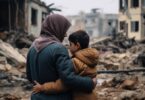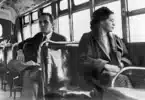Community mobilization – sometimes also called social mobilization – occurs when a community comes together to work towards a common goal. It’s a term often associated with healthcare (the World Health Organization considers mobilization the “backbone” of efforts to achieve the 2030 Agenda for Sustainable Development) but it can apply to any cause. When a community joins hands, they reflect the truth of the saying “there’s strength in numbers.” How does community mobilization work?
How mobilization works: looking at racial justice
Working for racial justice has always involved community mobilization. In the United States, the Civil Rights movement depended on strategies like boycotts, sit-ins, and marches. In 2020 following the murder of George Floyd, protests began across the country. Inspired by the movement, other countries like France, Australia, and New Zealand joined in solidarity and pointed out their own nations’ histories. What does mobilizing for racial justice entail? There are four main steps:
Talking to the community
When developing a campaign around a racial justice issue (like police brutality), the first step is to begin a dialogue within the community. Dialogue is crucial to the campaign’s scope and success. This is especially true if the organization behind the campaign is not based in the community it wants to serve. Organizers need to listen to the people most affected and ensure their voices take priority. A community-wide discussion is necessary even if the organization is local since there are always perspectives that might not be front and center. Dialogue establishes what the needs and desires of the community are; what work is already being done; new ideas for action; and challenges. This gives activists a solid foundation on which to build.
Defining goals
Once a campaign has community support, it needs to define its specific goals. This part shouldn’t be rushed. If the campaign’s goals are not based in evidence, there’s no way to know if they will even help the cause. The campaign “8 Can’t Wait” ran into this problem. It used a correlational study of the level of police killings of civilians, use of force policies, and cities’ demographics. With this information, it concluded that adopting certain policies reduces police killings. The problem is that the associations don’t necessarily support the conclusion. Other activists quickly jumped in, refuting the campaign’s “evidence-based” claims and accusing the campaign of deception. The backlash was so significant that the organization apologized and the co-founder left. This incident is a prime example of why goal definitions matter.
Gathering a coalition
Once goals are established, it’s time to build a coalition of groups and individuals that want to set the plan into motion. This can include independent activists, journalists, business owners, faith leaders, health professionals, and political leaders. It’s important to consider a potential collaborator’s history with racial justice and the skills they bring to the table.
As an example, there might be a local grocery store that wants to donate snacks and water for protesters. Organizers should meet with the store first to be sure the owner understands the campaign’s mission, so there are no misunderstandings down the road. When building a coalition, leaders should be sure that participants aren’t pushing agendas that don’t align with the campaign. Open communication and transparency between all participants and leaders are essential. This should happen on a continuum; it isn’t something you can check off a list and be done with.
Deciding on strategies
Now that there are participants on board, what strategies should be used? Racial justice campaigns have always used a wide variety. In the summer, protests took center stage, but the media only captured a slice of what goes into organizing protests and different activities. Marches, vigils, concerts, art fairs, and more are all part of raising awareness and putting non-violent pressure on authorities. Making these events a reality depends on funding, volunteers, and community outreach. Thanks to social media, just about anyone can get the word out and gather a group. One of the features of the 2020 racial justice movement has been street murals. Groups of artists will come together, sometimes each writing one letter of the phrase “Black Lives Matter” on the street. There were so many street murals, the list has its own Wikipedia page.
How do you measure the success of community mobilization?
How do you know when community mobilization has been successful? With racial justice, this is a complicated question. Looking at public opinion is one way to measure progress. Take the hashtag and organization Black Lives Matter as an example. It’s been around since 2013, but in 2020, it erupted across the internet. It also started appearing among demographics who hadn’t used it before. The number of corporations promising to look at their own racial justice efforts also indicates mainstream acceptance. Their commitment is not yet clear, but it’s significant that corporations believe supporting racial justice is good for business. Small wins can be celebrated even as the work continues. Community mobilization requires patience, but when people come together, change is on the horizon.
Take a course on Community Engagement to learn more.












